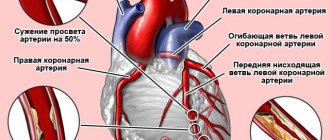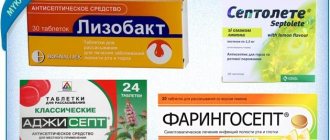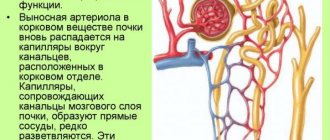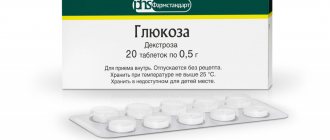Write a review
Reviews: 1
Manufacturers: Merckle (Germany)
Active ingredients
- Not indicated. See instructions
Disease class
- Brachial plexus lesions
- Lesions of the lumbosacral plexus
- Seropositive rheumatoid arthritis
- Gout
- Arthropathy in other diseases classified elsewhere
- Arthrosis, unspecified
- Joint pain
- Joint disease, unspecified
- Osteocondritis of the spine
- Ankylosing spondylitis
- Dorsalgia
- Neuralgia and neuritis, unspecified
Clinical and pharmacological group
- Not indicated. See instructions
Pharmacological action
- Anti-inflammatory
- Antipyretic
- Analgesic (non-narcotic)
Pharmacological group
- Glucocorticoids in combinations
- Vitamins and vitamin-like products in combinations
Pharmacodynamics of the drug
Ambene parentera is a multicomponent medicine. The drug has a uricosuric, anti-inflammatory, antipyretic, and analgesic effect.
Each component of the solution has a specific therapeutic effect:
- Dexamethasone. This is a glucocorticoid that has anti-inflammatory characteristics with an activity index of 30. The substance has virtually no mineralocorticoid activity.
- Sodium salicylamidoacetate. The medicine has an analgesic effect and improves the solubility of other drugs.
- Lidocaine. It has a pronounced analgesic effect, which reduces discomfort during injection.
- Phenylbutazone. The pyrazolone derivative anesthetizes, relieves fever, inflammation, and has uricosuric properties.
- Cyanocobalamin. A vitamin-like substance is involved in the production of nucleic acid, which stimulates lipid metabolism. The component promotes cell restoration and the formation of the myelin sheath on nerve fibers. A large dose of cyanocobalamin contained in the solution enhances its analgesic effect.
Thanks to the separation of solutions A and B, Ambene's activity lasts up to 36 months.
After intramuscular injection, dexamethasone is rapidly absorbed into the blood. Phenylbutazone has a high level of interaction with plasma proteins. The substance, together with dexamethasone, overcomes the placental barrier and penetrates into breast milk.
The biological transformation of phenylbutazone is slow, which is due to the high degree of interaction of NSAIDs with plasma proteins. This increases the half-life. Dexamethasone is eliminated within 3 hours.
Expiration dates and storage conditions of the medicine
In order for the combined product “Ambene Bio” to retain its full medicinal properties, it must be stored correctly. The solution must be in its original packaging. It is better to place the cardboard pack in a cool place, for example the bottom shelf of the refrigerator door.
Immediately before the intramuscular injection procedure, one ampoule or syringe must be warmed to human body temperature.
An open container with medicine should not be stored, since pathogenic microorganisms, when released into the liquid, contribute to the destruction of the chemical bonds of the drug.
Doctors recommend avoiding getting the medicine into the hands of children - serious consequences of drug poisoning are possible. Direct sunlight can penetrate the solution, so the packaging should not be exposed to direct sunlight.
The shelf life of an unopened package of Ambene Bio is 2.5–3 years. After the expiration of the officially specified date, which is stamped on the end of the cardboard box, it is absolutely prohibited to administer the drug into the patient’s body. Toxic processes will lead to deterioration in the functioning of hepatocytes, as well as the renal glomeruli.
Indications for use
The solution, like Ambene tabletki, is used for joint diseases. These are osteoarthritis, radiculitis, rheumatoid arthritis, any pain syndromes, ankylosing spondylitis, gout.
The drug is also prescribed for degenerative processes occurring in the spine or joints, inflammation or pathologies of peripheral nerves, and sports injuries. The solution is used for general improvement of the condition in cases of fever, severe pain, and increased levels of uric acid in the body.
It is noteworthy that the therapeutic effect of Ambene after completing a therapeutic course lasts up to 36 months.
Analogs
If the drug is intolerable, a substitute analogue may be prescribed. The following may be prescribed as drug replacements:
- Milgamma.
- Dexamethasone.
- Sinaflan.
- Prednisolone.
- Diprospan.
It is important to take into account the differences in the characteristics of the use of various substances. It is necessary to read the instructions and become familiar with the undesirable consequences. When changing substances, consult your doctor.
Contraindications
The use of Ambene is prohibited for people under the age of 14, for diseases of the heart muscle accompanied by conduction disorders, or surgical intervention. The drug is not used for thyroid dysfunction, hemorrhagic diathesis, tuberculosis, systemic mycosis.
Other contraindications:
- heart attack;
- corneal damage;
- hypersensitivity;
- osteoporosis;
- acute phase of gastritis;
- elderly age;
- deficiency of glucose-6-phosphate dehydrogenase;
- myelosuppression;
- stomatitis;
- peptic ulcer;
- pancreatitis;
- the appearance of lymphadenitis after the BCG vaccine;
- blood and bone marrow diseases;
- ventricular arrhythmias;
- porphyria;
- rheumatic polymyalgia;
- renal or hepatic dysfunction;
- temporal arteritis;
- myopathy;
- systemic connective tissue lesions;
- viral infections;
- myasthenia gravis;
- 2 months before scheduled vaccination and 2 weeks after it.
Ambene is used with extreme caution for thromboembolism, chronic hyperglycemia, bacterial infections, amoebic dysentery, epilepsy, and asthma attacks. Other relative contraindications are hypertension, hay fever, mental disorders, hypotension, pulmonary disorders.
Side effects
Ambene bio and Ambene solution in ampoules can cause a number of negative reactions. Regarding the cardiovascular system, the appearance of orthostatic collapse, hypotension, and decreased heart rate is likely. On the part of the nervous system, the development of vertigo, psychosis, euphoria, convulsive syndrome, severe agitation, sleep disturbance, and headache is possible.
Other side symptoms:
- Urinary organs – kidney dysfunction, anuria.
- Respiratory system – respiratory depression, hyperventilation.
- Sense organs – auditory or visual disorders.
- Digestive system - liver dysfunction, nausea, erosions and ulcers of the gastrointestinal tract, vomiting, stool upset, bleeding from the gastrointestinal tract, stomach discomfort, lack of appetite.
- Allergic reactions - bronchospasm, exanthema, skin itching.
- Circulatory system – deficiency of three types of blood cells, low levels of leukocytes and platelets, impaired bone marrow activity.
- Local reactions – necrosis and purulent inflammation of tissues, pain in the area of injection.
- Other negative effects are decreased immune activity, chills, swelling of the lungs or brain, fever, fungal diseases, coma.
The use of the solution leads to changes in laboratory parameters. This is an increase in transaminase activity, metabolic acidosis or alkalosis.
Solution for intramuscular administration of Ambene
Instructions for medical use of the drug
Description of pharmacological action
A combined drug, the effect of which is determined by the properties of the components included in its composition. It has anti-inflammatory, analgesic and antipyretic effects, and causes a uricosuric effect.
Indications for use
Short-term treatment of acute conditions with articular syndrome: rheumatoid arthritis, osteoarthritis, ankylosing spondylitis, gout; for neuritis, neuralgia, radiculitis (including degenerative diseases of the spine); sports injuries.
Release form
solution for intramuscular administration; double ampoules, box (box) 3. solution for intramuscular administration; double-chamber syringe with a needle, napkin and band-aid, box (box) 3.
Pharmacodynamics
A combined drug, the effect of which is determined by the properties of the components included in its composition. It has anti-inflammatory, analgesic and antipyretic effects, and causes a uricosuric effect. Dexamethasone is a glucocorticoid that has a pronounced anti-inflammatory effect; the index of its relative anti-inflammatory activity is 30 with an almost complete absence of mineralocorticoid activity. Phenylbutazone is an NSAID, a pyrazolone derivative, that has anti-inflammatory, analgesic and antipyretic effects, and causes a uricosuric effect. Sodium salicylamide-o-acetate, which is part of other ingredients, has an analgesic effect and also contributes to better solubility of the drug. Cyanocobalamin, which is involved in the synthesis of nucleic acids, activates lipid metabolism and is therefore important in cell regeneration and the formation of the myelin layer of nerve fibers, is included in the drug in a sufficiently high dose to enhance the analgesic effect. Due to the presence of lidocaine hydrochloride, which is part of the other ingredients of the solution, injections of the drug are almost painless. The active substances that make up Ambene potentiate each other's action, which allows you to reduce the dose of dexamethasone. The activity of the drug is maintained for a long time (36 months) due to the separation of solutions A and B from each other.
Pharmacokinetics
Absorption After intramuscular administration, dexamethasone is rapidly absorbed into the systemic circulation. Distribution Phenylbutazone has a high degree of binding to plasma proteins. Dexamethasone and phenylbutazone cross the placenta and are excreted in breast milk. Metabolism Due to the high binding of phenylbutazone to plasma proteins, its metabolism occurs slowly, providing a long T1/2. Elimination T1/2 of dexamethasone is about 3 hours.
Use during pregnancy
Contraindicated.
Contraindications for use
Hypersensitivity, incl. to NSAIDs, acute gastritis, peptic ulcer of the stomach and duodenum (including a history), acute myocardial infarction, chronic heart failure in the decompensation phase, myocardial diseases with conduction disorders, ventricular arrhythmias; severe dysfunction of the kidneys, liver or thyroid gland; viral infection (including herpes infection, chicken pox, mumps, polio, with the exception of the bulbar form of the disease); systemic mycosis, glaucoma, myelosuppression, severe myopathy, myasthenia gravis, Sjogren's syndrome, systemic lupus erythematosus, hemorrhagic diathesis, giant cell (temporal) arteritis, polymyalgia rheumatica, pancreatitis, stomatitis, period 8 weeks before and 2 weeks after routine vaccination, lymphadenitis after vaccine administration BCG; surgical operations, pregnancy, breastfeeding, children (up to 14 years) and old age.
Side effects
From the nervous system: dizziness, headache, agitation, sleep disturbance; rarely - visual, hearing, mental disorders. From the cardiovascular system and hematopoietic system: leukopenia, agranulocytosis, thrombocytopenia, pancytopenia, aplastic anemia; rarely - arterial hypotension, orthostatic collapse. From the digestive system: ulcerogenic effect, anorexia, gastralgia, nausea, vomiting, diarrhea, rarely - liver dysfunction; in some cases - bleeding and perforation of the gastrointestinal tract. Allergic reactions: exanthema, skin itching, fever; rarely Stevens-Johnson syndrome, Lyell's syndrome, lupus-like syndrome, bronchospasm. Others: rarely - Itsenko-Cushing syndrome, mycosis, impaired renal function, decreased resistance to infections, delayed wound healing, pain at the injection site; in some cases - abscess and tissue necrosis at the injection site; lymphadenopathy, sialadenitis.
Directions for use and doses
IM, deep intragluteal, slowly - 1 injection per day daily or every other day (no more than 3 injections per week). The interval between courses should be at least several weeks. When using a set of ampoules, first draw solution A into the syringe, then solution B.
Interactions with other drugs
Weakens the effect of antihypertensive drugs, hormonal contraceptives, sulfinpyrazone and probenecid. Increases the toxicity of methotrexate. Anabolic steroids and methylphenidate enhance the effect; barbiturates (increase the hypnotic effect), promethazine, rifampicin, hydantoin - weaken. When used simultaneously with other anti-inflammatory drugs and drugs containing ethyl alcohol, the risk of bleeding from the gastrointestinal tract increases; with oral hypoglycemic agents (sulfonylurea derivatives) or insulin, hyper- or hypoglycemia is possible, with cardiac glycosides - slowing or accelerating the digitalization of patients, with diuretics - a decrease in diuresis and natriuresis with the development of hypo- or hyperkalemia. When co-administered with heparin, indirect anticoagulants, dipyridamole, sulfinpyrazone, dose adjustment is necessary depending on PT parameters. Ambene increases plasma concentrations of sulfonamides and lithium preparations.
Precautions for use
Prescribe with caution to patients with impaired renal function, diabetes mellitus, tuberculosis, amebiasis, epilepsy, mental illness, bronchial asthma, hay fever, chronic nonspecific lung diseases, acute and chronic bacterial infections, arterial hypertension or hypotension, thromboembolism, severe osteoporosis. Weakened and elderly patients are prescribed the minimum dose, if possible, to avoid the development of side effects. Before treatment, the presence of gastric and duodenal ulcers should be excluded. During therapy, patients' food should contain a sufficient amount of potassium, protein, vitamins and little fat, carbohydrates and table salt. In cases of fever, headache, changes in the skin and mucous membranes, development of leukopenia, agranulocytosis, dark coloration of stool, the drug should be discontinued. With long-term therapy, systematic monitoring of the peripheral blood picture and renal and liver function is necessary. In patients simultaneously receiving anticoagulants, blood coagulation parameters should be systematically analyzed.
Special instructions for use
If it is necessary to study the function of the thyroid gland, tests are carried out no earlier than 2 weeks after stopping treatment with Ambene (due to the influence of phenylbutazone). Medicines containing cyanocobalamin (Ambene) may distort clinical and laboratory parameters in patients with funicular myelosis and pernicious anemia.
Storage conditions
List B: In a place protected from light, at a temperature not exceeding 25 °C.
Best before date
36 months
ATX classification:
M Musculoskeletal system
M01 Anti-inflammatory and antirheumatic drugs
M01B Combinations of anti-inflammatory drugs
M01BA Non-steroidal anti-inflammatory drugs in combination with corticosteroids
M01BA01 Phenylbutazone in combination with corticosteroids
Compatibility with other drugs
When used together with Methylphenidate and anabolic steroids, the therapeutic effect of Ambene increases. When using the drug with insulin and hypoglycemic drugs, hypo- or hyperglycemia is likely to occur.
Other unwanted interactions:
- Inducers of microsomal liver enzymes (before the start of therapy) - a decrease in the effectiveness of Ambene.
- Indirect anticoagulants. Sulfinpyrazone, Dipyridamole, Heparin - increase the likelihood of hemorrhage, which requires dose adjustment.
- Methotrexate – enhances the toxic properties of the cytostatic drug.
- Barbiturates – increase the hypnotic effect.
- Lithium preparations, sulfonamides - increase the level of these drugs in the blood.
- Antihypertensive drugs – reducing the effectiveness of the latter.
- Phenytoin – increased risk of intoxication.
- Diuretics – the appearance of hyper- or hypokalemia, a decrease in nonatriuresis or diuresis.
- Hormonal contraceptives – decreased effect of the latter.
- Probenecid, Sulfinpyrazone – reducing the uricosuric properties of drugs.
- Cardiac glycosides – acceleration or reduction of digitalization of patients.
Taking Ambene together with alcohol can cause disulfiram-like reactions. As a result, poisoning develops, manifested by convulsions, nausea, respiratory dysfunction, tachycardia, vomiting, redness of the skin, fever, headache, and bleeding from the gastrointestinal tract.
If negative symptoms develop, you must stop drinking alcohol. You should drink plenty of fluids over the next 4 hours.
In general, alcohol intake is contraindicated during treatment with Ambene. Drinking alcohol is allowed only 30 days after the end of the therapeutic course.
Interaction with other drugs
Treatment with the drug when other drugs are simultaneously introduced into the body can cause complications. The instructions describe the following examples:
- taking anti-inflammatory drugs in combination with Ambene can provoke bleeding with gastric localization,
- anicoagulants with Ambene require careful attention to doses,
- hypoglycemia may occur when combined with medications prescribed for diabetics,
- parallel use of Methotrexate is prohibited, since the effects will be toxic,
- lithium preparations will be more concentrated while using Ambene,
- a ban has been imposed on joint treatment with Glycosides (they are prescribed for the heart),
- Ambene injections and treatment with Phenytoin lead to active intoxication,
- the drug negatively affects the effectiveness of contraceptive hormones. When using Ambene, the effectiveness decreases,
- the level of effectiveness of antihypertensive drugs decreases.
If you are taking any other medications or medications, it is important to consult a specialist. This is done before treatment. This way they can better select your dose or rule out a dangerous combination of medications.
Use of the drug
Ambien is prescribed one injection every 1 or 2 days. Up to three injections are allowed per week. Repeating the therapeutic course is permissible only a couple of weeks after completing the first stage of treatment.
The patient lies horizontally. Ambene instructions for use indicate that the solution is administered to the patient intramuscularly slowly and deeply.
If a set of two ampoules is used, then first the syringe is filled with solution A, and then with solution B.
When using Ambene as a finished syringe, remove the protective cap from its end part. The needle is attached to the cone, and the piston with stopper is moved forward to obtain the first drop of the product. Next, liquid B is combined with solution A using a connecting bridge. The injection is given immediately after mixing the two types of solutions.
How to use
Prescription of therapeutic measures is possible only by a doctor. He examines the patient and adjusts the dose and frequency of administration of the drug. When prescribing, the following are important: the severity of the condition, the type of disease. Individual differences in the body and the severity of manifestations are also taken into account. Compliance with the entire list of rules for using injections allows you to achieve the desired therapeutic effect. It is advisable that the administration of the composition be carried out by a properly qualified physician. If this is not possible, you can administer the medicine without a doctor, but strict adherence to the instructions is required. The reception algorithm is as follows:
- The container with the substance must be intact. The shelf life should not expire. Before administration, storage should be in a refrigerator.
- The liquid must be brought to a temperature suitable for administration into the body immediately before use. You can rub it in your palms or heat it.
- Remove the cap protecting the package. Place a sterile needle. For proper preparation, you need to first draw from the package with the letter A, then from B. You can mix the compositions of both chambers by moving the piston in the direction of the tip.
- The syringe is placed in a tray (it must be sterilized). And the puncture area is wiped with an antiseptic liquid.
- The patient should not move, he should position himself parallel to the floor.
- Intramuscular injection involves placing an injection in the buttock. The needle is placed deeply using a slow movement. You need to prick in different areas, this way you avoid swelling and hardening of the cover.
Ambien injections are prescribed to eliminate exacerbations. This is facilitated by the composition of substances with strong effects. They relieve severe pain, fever, and inflammation. Such effects are present in injuries, joint diseases, diseases of a degenerative-dystrophic nature, and neurology.
It is necessary to visit a doctor, because this way you can avoid negativity. Including overdoses, undesirable consequences. It is necessary to take samples (kidney, liver) and examine the blood.
The use of Ambene is carried out according to the following principle:
- The course in full effect is limited to 3 administrations per week. You can do them every day or skip one day,
- It is prohibited to administer more than the prescribed amount of medication. If you do not note the desired effectiveness, you need to replace the drug,
- for people whose immune function is weak, as well as those in the elderly age group, a minimum dose can be used,
- repeating the treatment is possible after resting for at least a couple of weeks. The doctor must give permission
- Diet may be necessary for the treatment process. This is especially true in the case of osteochondrosis. Avoid carbohydrates, salt and fatty foods. Foods with potassium, vegetables and fruits and proteins are useful.
Overdose
When using the drug Ambene in large dosages, coma, nausea, anuria, renal or hepatic dysfunction may develop. Other complications are swelling of the lungs or brain, bradycardia, vomiting, acidosis, convulsions.
Disturbances in the circulatory system are possible, such as a decrease in the number of blood clots, aplastic anemia, etc. Therapy includes hemodialysis, the use of anticonvulsants, and artificial ventilation.
In case of overdose, bronchospasm and respiratory depression are likely to develop. Treatment consists of hemodialysis, resuscitation, and anticonvulsant medications.
Also, if the dose is exceeded, necrosis and pain in the area where the solution was administered may occur. Sometimes an abscess, sialadenia, and enlarged lymph nodes develop.
pharmachologic effect
Inflammation is effectively relieved, with virtually no side effects after using the drug Ambene. The analog works in much the same way.
Phenylbutazone is an NSAID that relieves pain, relieves fever, and provides diuretic and anti-inflammatory effects. Sodium salicylamide acetate also has analgesic properties; its presence in the composition of the drug promotes better dissolution of the components.
Vitamin B12 is necessary for the normal implementation of metabolic processes in which nucleic acids and lipids are involved. These processes affect the nervous tissue, and if they occur correctly, it is restored. This is especially important for the condition of the myelin sheath of neurons. The vitamin allows you to remove degenerative changes that have occurred in the tissue due to disease (neuritis, osteochondrosis).
Lidocaine ensures painless administration of the drug. All components present in Ambene combine perfectly with each other and enhance each other’s effects. Since the medicine has a powerful effect on the body, it is administered in small doses. An analogue of the drug "Ambene" contains other substances, but their action is aimed at achieving the same result, which makes it possible to replace the original if such a need arises.
special instructions
Patients with chronic disorders, low immunity and the elderly are prescribed a minimal amount of medication.
To avoid the appearance of local side symptoms (necrosis, dermatitis, abscess), injections are administered to various places. After eliminating the acute signs of the disease, it is recommended to use Ambene in another dosage form. These can be tablets or rectal suppositories.
14 days after completing the treatment course, to exclude the effects of phenylbutazone, you must contact an endocrinologist to examine the functioning of the thyroid gland.
During treatment with Ambien, you need to eat foods containing K+, vitamins, and proteins. It is advisable to avoid salty, carbohydrate and fatty foods.
Reviews and recommendations from doctors and patients
Doctors often prescribe Ambene in solution form to relieve acute pain due to arthritis, ankylosing spondylitis, gouty arthritis, and neuritis. The product is especially popular because it contains several medicinal components. Thanks to this, the medicine simultaneously has the following therapeutic effects: relieves inflammation, pain, fever, and inhibits the formation of urinary stones.
Reviews from patients indicate that Ambene is an effective pain reliever for diseases of the spine and joints. After 1-2 injections, the discomfort goes away.
The disadvantages of the medicine include many contraindications, high cost, and the fact that ampoules are difficult to find on sale.
How to prepare a solution for injection
Ambene injections are packaged in a pair of ampoules. Draw up A solution. Next, draw B solution. On sale you can find a ready-made solution placed in a syringe. In this case, you need to remove the cap and attach a sterile needle.
Application must be carried out immediately after preparation. Only the mixed contents of ampoules work well. Temperature is of great importance: the substance should be approximately +25 degrees. Ideally, the injection should be performed by a qualified healthcare professional. Only a doctor can correctly mix the compounds and insert them without pain.




